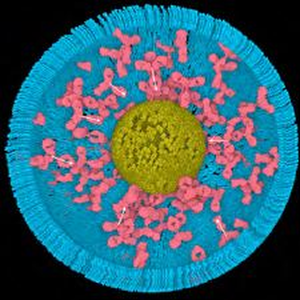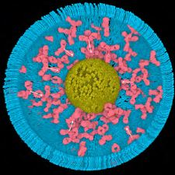Information
- Publication Type: Bachelor Thesis
- Workgroup(s)/Project(s):
- Date: February 2017
- Date (Start): October 2016
- Date (End): February 2017
- Matrikelnummer: 1107772
- First Supervisor: Ivan Viola
Abstract
Models of a biological organism can support scientists in various fields, such as medicine, pharmacy or biology. When precise macromolecular composition of an organism is to be captured by the model, tens of thousands of protein macromolecules have to be positioned in order to create the model. This process is complicated and time consuming. In this thesis we propose an approach based on statistical modeling of microorganisms, which enables the creation of such scenes with minimal effort. The modeling is based on decision trees and probability calculations. The basic principle is to start with a random distribution. Then subsequently adjustments from the user on one or several objects, such as molecules, are gathered. These serve as examples to change the orientation and location of all other objects in the scene. The approach is realized in a tool implemented in Unity3D.Additional Files and Images
Weblinks
No further information available.BibTeX
@bachelorsthesis{Wihann_2017,
title = "Statistical Modelling of Microorganisms",
author = "Theresa Wihann",
year = "2017",
abstract = "Models of a biological organism can support scientists in
various fields, such as medicine, pharmacy or biology. When
precise macromolecular composition of an organism is to be
captured by the model, tens of thousands of protein
macromolecules have to be positioned in order to create the
model. This process is complicated and time consuming. In
this thesis we propose an approach based on statistical
modeling of microorganisms, which enables the creation of
such scenes with minimal effort. The modeling is based on
decision trees and probability calculations. The basic
principle is to start with a random distribution. Then
subsequently adjustments from the user on one or several
objects, such as molecules, are gathered. These serve as
examples to change the orientation and location of all other
objects in the scene. The approach is realized in a tool
implemented in Unity3D. ",
month = feb,
address = "Favoritenstrasse 9-11/E193-02, A-1040 Vienna, Austria",
school = "Institute of Computer Graphics and Algorithms, Vienna
University of Technology ",
URL = "https://www.cg.tuwien.ac.at/research/publications/2017/Wihann_2017/",
}

 Bachelor Thesis
Bachelor Thesis image
image

